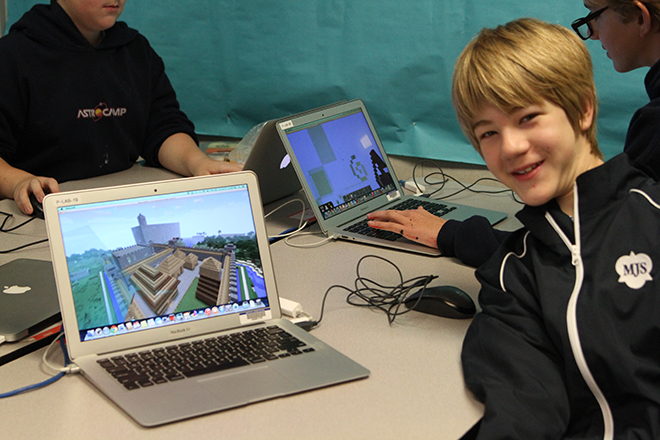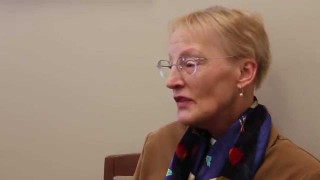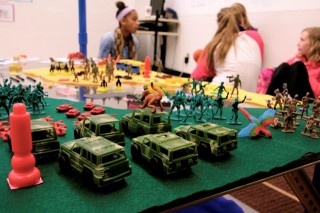Exciting 7th graders about medieval world history takes a good deal of creativity but teacher, Nicole Sanders knew exactly how to engage this group of digital natives – with a game. Minecraft, a computer game described as “virtual Legos,” provided the creative opportunity and engaging format she needed. Using Minecraftedu, the education edition of the game, Nicole created a world for her students to build a medieval manor. To expand the scope of the project, a few student Minecraft enthusiasts helped tie the manor construction to their science curriculum by setting up locations in different ecosystems: forest, tundra, and dessert. Before they began building, students signed a user contract where they agreed on proper use of the game, including penalties for cyber-bullying, vandalism and acting as a bystander. Regardless of the virtual nature of this project, the moral implications of poor decisions were set up to parallel the real world.
Many stages of research, creation of blue prints, formal presentations and critique sessions occurred before the actual building on Minecraft began. Once the main structures were built, real events occurred on the manors, such as preparing for the destruction of the Bubonic Plague and planning for an impending siege.
Students had six weeks before presenting to an authentic audience, the fourth graders. Older and younger students paired up giving the seventh graders the responsibility to discuss feudalism and encourage connections with the California Missions studied in 4th grade history. They talked about sustainability, shared Catholic values and the strategic use of geography to make these connections.
To bring the experience full circle, Nicole asked her students to write a formal persuasive essay proving why the Minecraft Manor Project helped them grow as a learner. Students found the project to be an eye opening experience, challenging their creativity, leadership skills and team player capabilities.


